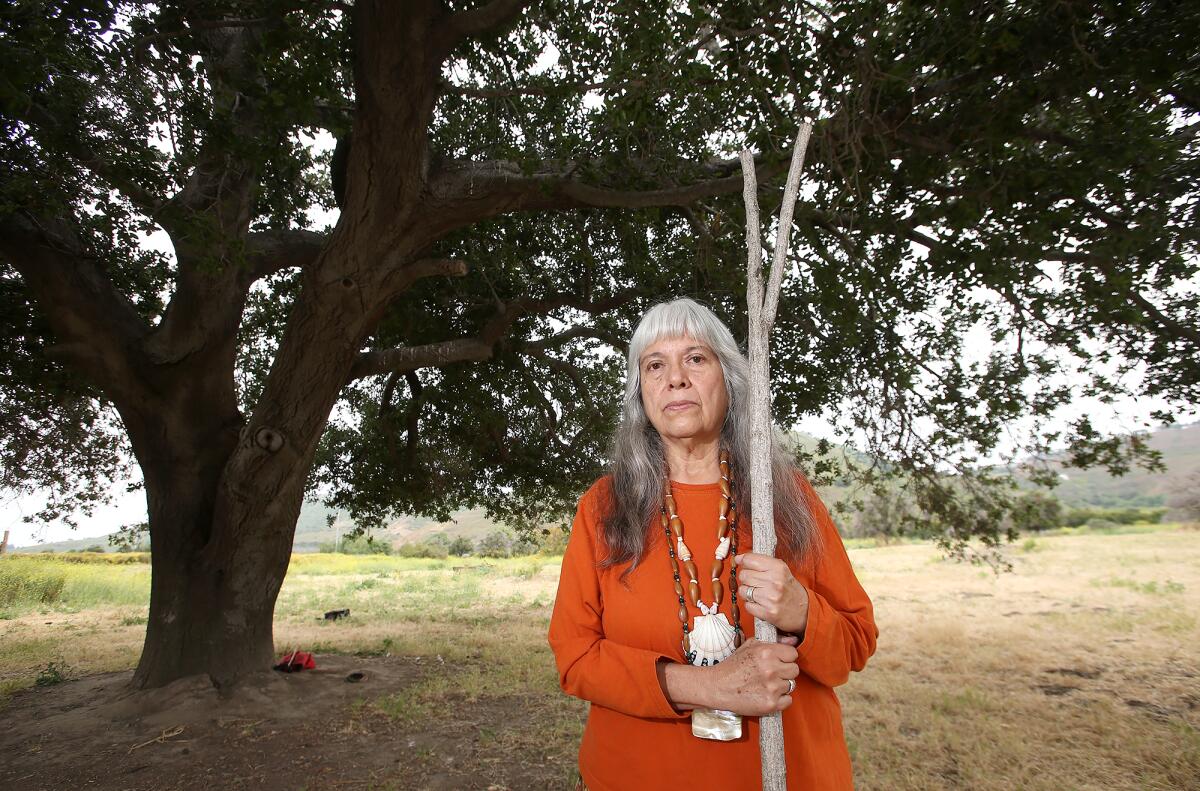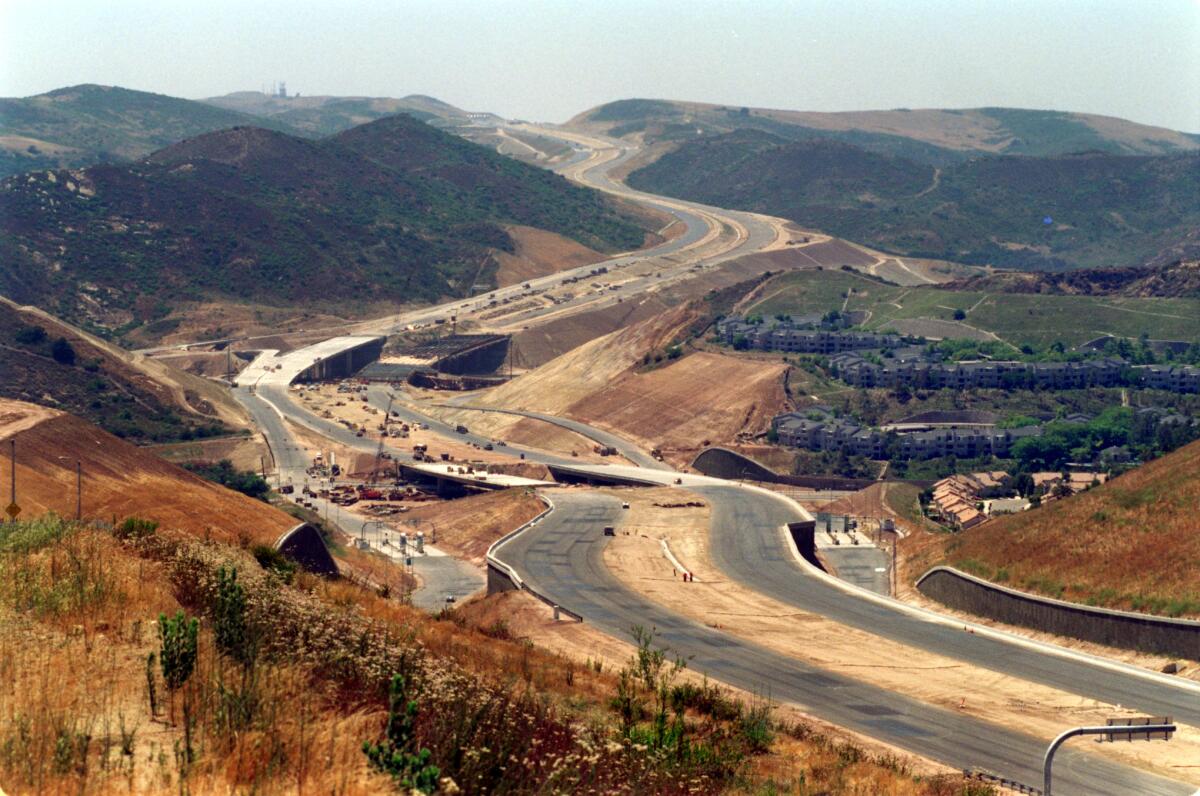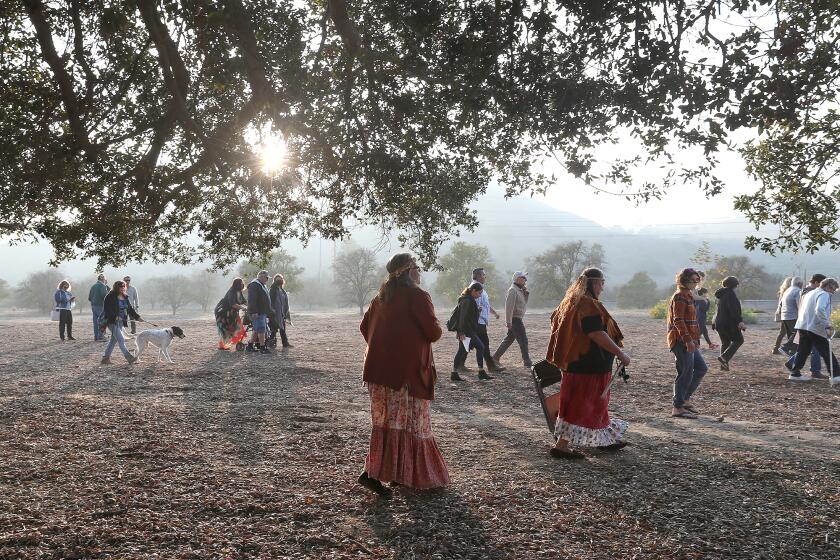First people of Orange County to spread message of preservation at San Clemente event

- Share via
In 2007, Rebecca Robles and other tribal members of the Juaneño Band of Mission Indians formed a coalition to save an ancient Native American village from being damaged by a proposed toll road.
For Robles, the effort was personal because Panhe was her mother’s ancestral village and dates back to more than 9,000 years ago. The push from the Native American community was just one aspect of the years-long battle that environmentalists waged against the six-lane highway that would have lengthened the Foothill South toll road by 16 miles by running down the 5 Freeway into northern San Diego County. The toll road would have used a portion of San Onofre State Beach, where the village of Panhe once stood.
Robles said during an interview this week that environmental groups and advocates against the toll road regularly highlighted the impact it would have had on the land surrounding the famed Trestles surf spot and animal species that live in the native habitat, but there wasn’t much emphasis placed on the Native American site. In order to raise awareness and support for preserving Panhe, Robles started an annual celebration to honor the ancient village.
“Many of us Acjachemen people can trace our roots to that village,” Robles said of the site, which is on the state Native American Heritage Commission’s register of sacred sites in California. “We heard about the endangered species and about the traffic and all that, but there wasn’t the emphasis on the sacred site or the historical importance of that village.”
The toll road was eventually withdrawn due to the pressure, but the Panhe celebration is still going strong, though the pandemic caused a two-year hiatus. On March 27, the free event returns and will be held from 10 a.m. to 4 p.m. at the San Mateo Campground in San Clemente. Part of the land of the original village of Panhe lies in the campground. The other part of the village was located on what is now Camp Pendleton.

The event celebrates the preservation of Panhe and other Native American culture through singing and dancing, basketry demonstrations, storytelling, flute performances, plant demonstrations, museum exhibits, children’s activities and various vendors and artisans. It is also meant to be educational.
“It’s our history as the Acjachemen people, but it’s a huge portion of California history that’s written out, that we don’t hear anything about,” Robles said. “We want to share our history and let people know that we are a thriving community.”
Panhe was the site of the first baptism in California and was the place where Spanish explorers, Catholic missionaries and the Acjachemen people first met, according to the San Onofre Parks Foundation.
The event is informed by this important state history.
Patricia Martz, a former Cal State Los Angeles anthropology and archaeology professor, said Native Americans come from as far as Mexico for the event. Martz and the California Cultural Resource Preservation Alliance host a recurring booth with artifacts, flintknapping demonstrations and talks on preservation. Martz is president of the board of directors of the alliance, an Irvine-based group that seeks to protect and preserve cultural resources such as sacred sites, archaeological and historical sites, among other areas.
Martz said other booths will sell frybread, handmade jewelry and Native American crafts.
“They’ll come to the various booths and they see the Native American performers, and people give educational talks and messages,” Martz said. There’s usually some native-plants people there that talk about native plants, and there’s people that talk about preserving water and the environment and how Native Americans have always done that. So it’s educational as well as entertaining.”
Another aim of the Panhe event continues to be spreading awareness and amassing support for the tribe’s preservation efforts in Orange County.
Several Native American tribal leaders and local conservation groups sent a letter to San Juan Capistrano city officials this week, urging them to preserve the land where their ‘mother village’ once stood.
In the past, Martz said tribe members have circulated at the Panhe event a petition pushing the city of Irvine to create a cultural and natural history museum in the city’s Great Park. Tribal leaders are hoping the museum will be the first venue in the county to tell the whole story of the Juaneño Band of Mission Indians. It would provide a home for thousands of artifacts currently tucked away in warehouses, universities, anthropological societies and other storage areas.
Another project highlighted at the event was the Juaneño effort to pressure the city of San Juan Capistrano to create a small park commemorating one of the original Native American communities in Orange County. After several delays and political hurdles, the tribe celebrated the opening of the Putuidem Village park in December. The 1.5-acre park, which lies on the 65-acre Northwest Open Space, will serve as a place for the tribe to hold ceremonies and educate the public about their traditions.
Most recently, the tribe has focused its attention on preserving the rest of the Northwest Open Space. Several Native American tribal leaders and local conservation groups sent a letter to San Juan Capistrano officials earlier this month urging them to preserve the land. The council will consider development proposals on the land in the coming months. In 2019, a glamping and camping business was being considered for the Northwest Open Space, though residents opposed it. Robles said there will be outreach efforts at this year’s event on this project.
“Indigenous people see it as our responsibility to take care of the land and to preserve it,” Robles said. “Our responsibility isn’t just for our lives, it’s for the generations to come. It’s a different way of seeing the world. Because the way mainstream society sees the world is that it’s to be used, it’s to make profit.”
All the latest on Orange County from Orange County.
Get our free TimesOC newsletter.
You may occasionally receive promotional content from the Daily Pilot.





